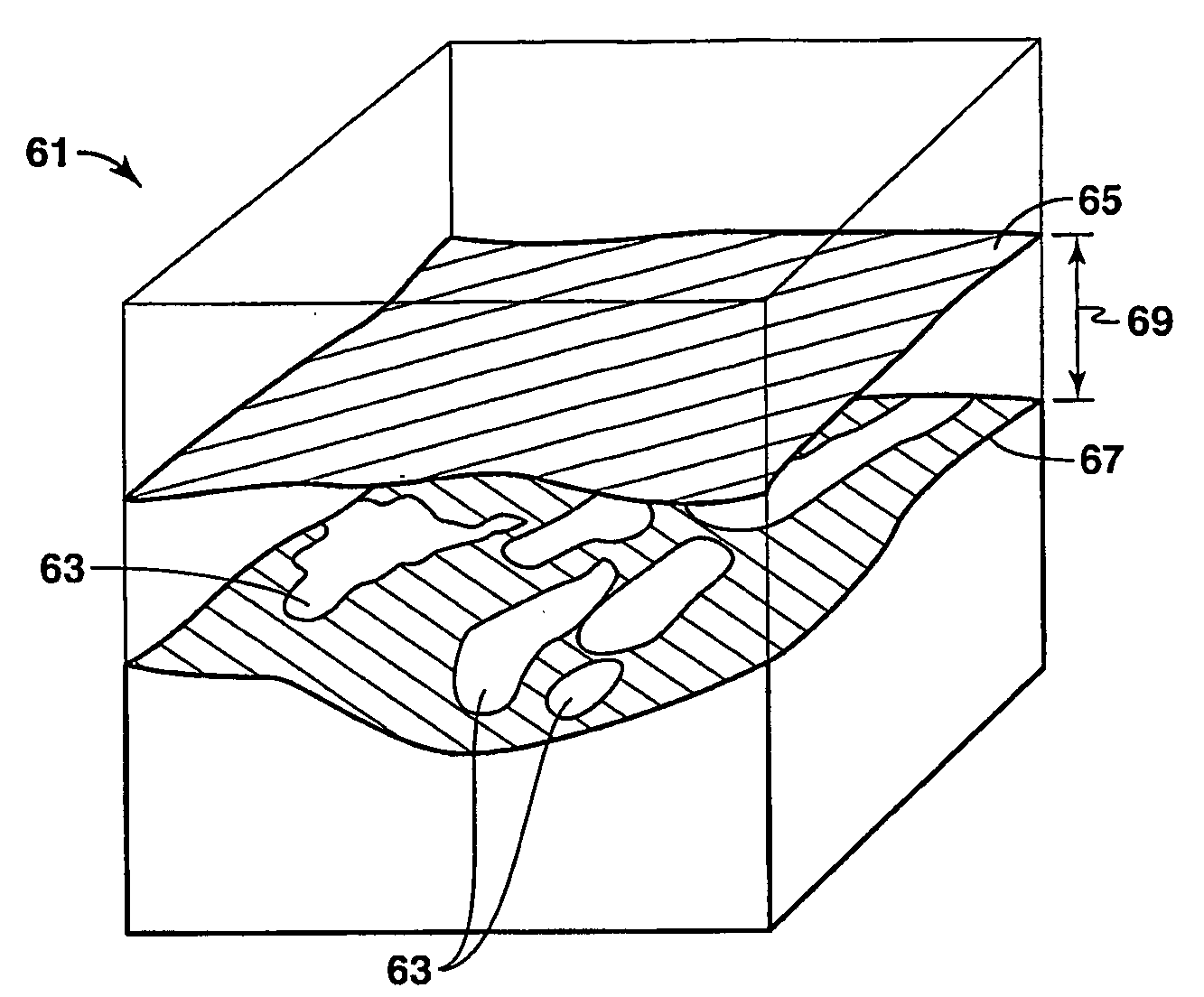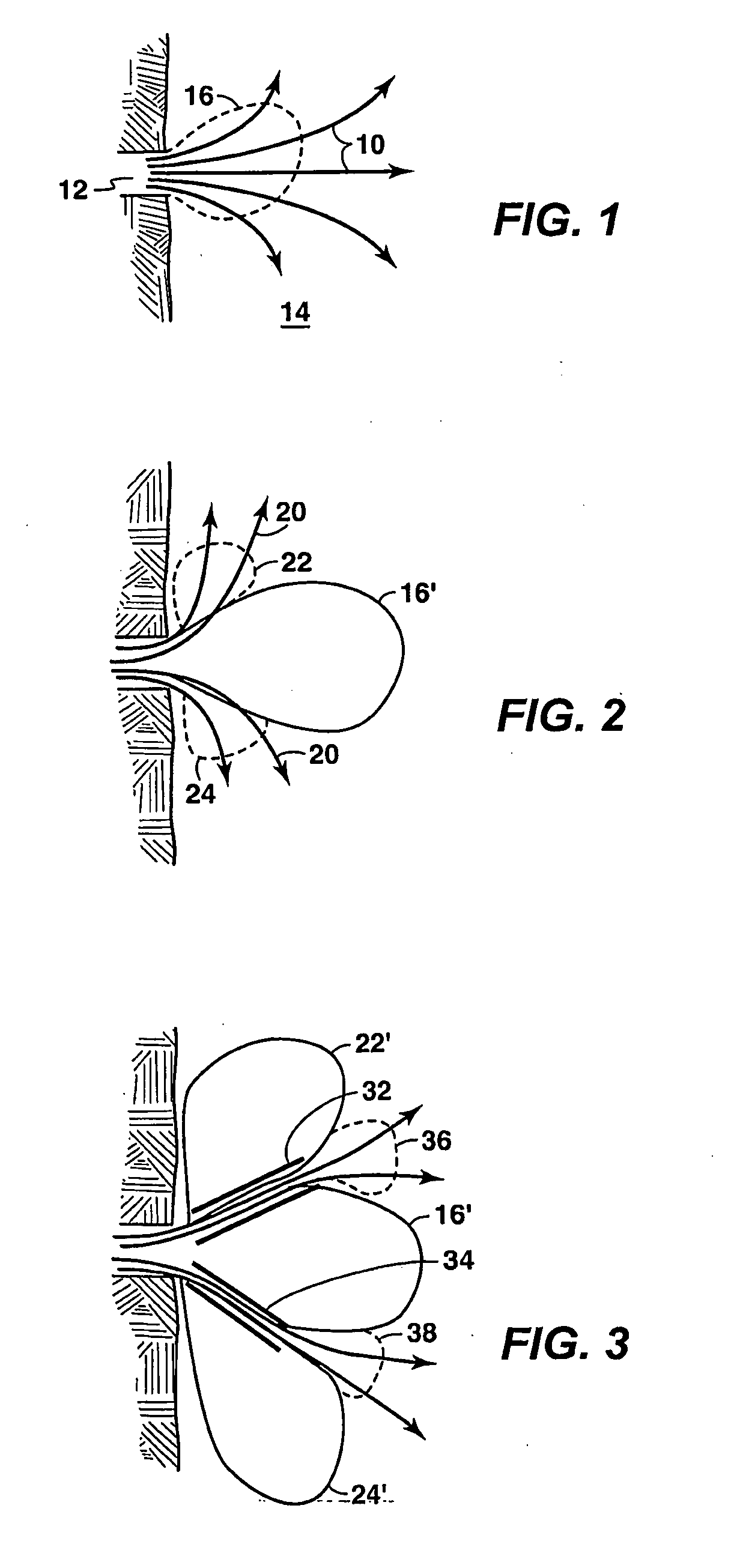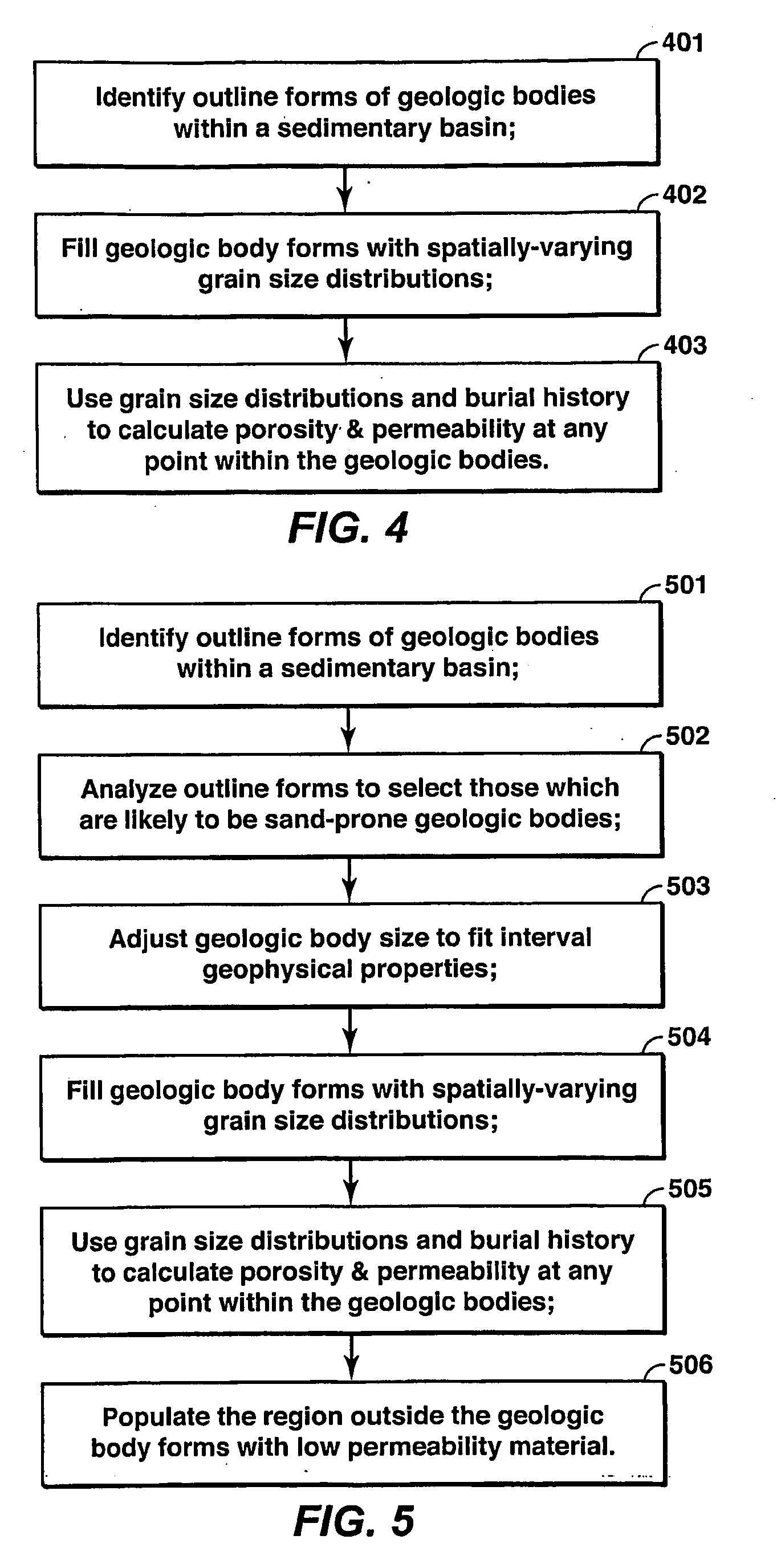Method for Constructing Geologic Models of Subsurface Sedimentary Volumes
a geologic model and subsurface sediment technology, applied in the field of geologic modeling, can solve the problems of inability to accurately characterize the identification or modeling of channels, inability to readily capture complex spatial information provided by simple shapes provided in existing methods, and inability to closely replicate structures observed in depositional systems such as rivers, deltas and deep-water canyons and fans
- Summary
- Abstract
- Description
- Claims
- Application Information
AI Technical Summary
Problems solved by technology
Method used
Image
Examples
first embodiment
[0036]A first embodiment will now be described. With reference to FIG. 4, this embodiment involves procedures to determine rock properties within a subsurface region using a seismic image of the region. As illustrated in FIG. 4, an outline form of at least one geologic body within the subsurface region is identified (step 401). The grain-size distribution in at least one point within the geologic bodies as identified in step 401 is determined (step 402). Finally, at least one rock property is determined using the grain size distribution found in step 402 (step 403). The rock properties include porosity and permeability. The individual steps will be described in greater detail in the following paragraphs.
[0037]Step 401 is identification of outline forms of geologic bodies and can be accomplished by a variety of known methods from geologic data. The geologic data can include but is not limited to seismic data, outcrop data or studies, core samples, reservoir performance data and / or we...
second embodiment
[0055]A second embodiment will now be described. With reference to FIG. 5, this embodiment involves procedures to determine rock properties within a subsurface region using a seismic image of the region. As illustrated in FIG. 5, outline forms of geologic bodies within the reservoir interval are identified (step 501). Each outline form is evaluated and discarded if it is determined that the form is unlikely to be a sand-prone geologic body (step 502). The outline forms are adjusted in size to make them consistent with additional constraints on the reservoir (step 503). The grain-size distribution at any point within the geologic body forms is determined (step 504). The rock properties are determined using the grain size distribution (step 505). The volume within the reservoir interval that is not associated with a geologic body form is filled with low permeability material (step 506).
[0056]Step 501 involves the identification of the outline forms of geologic bodies from geologic dat...
third embodiment
[0070]In addition to the embodiments described above, a third embodiment is further described in FIG. 12. With reference to FIG. 12, this embodiment involves procedures to determine rock properties within a subsurface region using a seismic image of the region. As illustrated in FIG. 12, an outline form of at least one geologic body within the subsurface region is identified in step 1201. The depositing flow field that created the geologic body is determined from the outline form of the body in step 1202. The grain size distribution within the geologic body is determined using a relationship between the estimated flow field and the deposited grain size distribution in step 1203. Then, rock properties within the geologic body are determined based on the estimated grain size distribution in step 1204.
[0071]Step 1201 is the identification of outline forms of geologic bodies and may be accomplished according to a variety of methods, as described in step 401.
[0072]Step 1202 involves dete...
PUM
 Login to View More
Login to View More Abstract
Description
Claims
Application Information
 Login to View More
Login to View More - R&D
- Intellectual Property
- Life Sciences
- Materials
- Tech Scout
- Unparalleled Data Quality
- Higher Quality Content
- 60% Fewer Hallucinations
Browse by: Latest US Patents, China's latest patents, Technical Efficacy Thesaurus, Application Domain, Technology Topic, Popular Technical Reports.
© 2025 PatSnap. All rights reserved.Legal|Privacy policy|Modern Slavery Act Transparency Statement|Sitemap|About US| Contact US: help@patsnap.com



